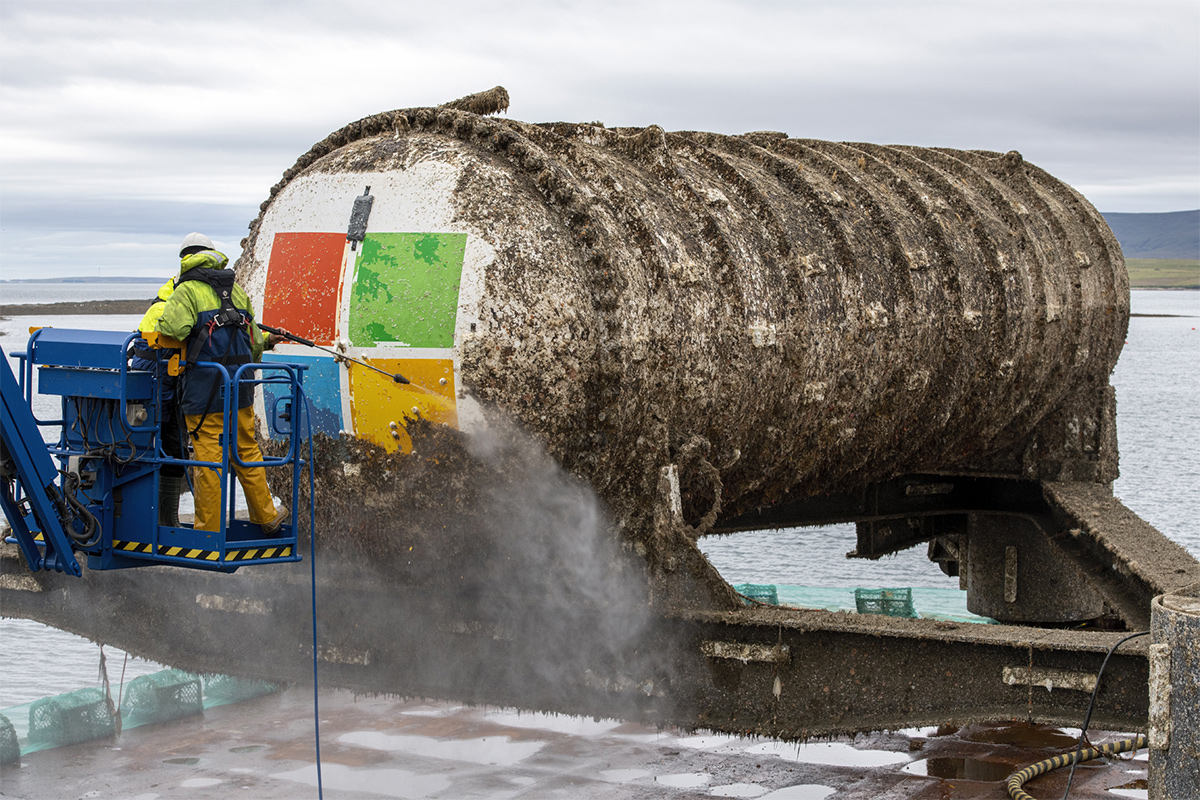Microsoft is starting to submerge its servers in liquid to improve performance and save energy. A rack of servers is now being used for production loads in what looks like a liquid bath, reported in The Verge.
This immersion process has existed in the industry for a few years now, earlier Microsoft sank the entire data centre to the bottom of the Scottish sea.
Microsoft claims it’s “the first cloud provider that is running two-phase immersion cooling in a production environment.”
Advertisement
The cooling works by completely submerging server racks in a specially designed non-conductive fluid. The fluorocarbon-based liquid works by removing heat as it directly hits components and the fluid reaches a lower boiling point (122 degrees Fahrenheit or 50 degrees Celsius) to condense and fall back into the bath as a raining liquid. This creates a closed-loop cooling system, reducing costs as no energy is needed to move the liquid around the tank, and no chiller is needed for the condenser either.
“It’s essentially a bathtub. The rack will lie down inside that bathtub, and what you’ll see is boiling just like you’d see boiling in your pot. The boiling in your pot is at 100 degrees Celsius, and in this case it’s at 50 degrees Celsius,” Christian Belady, vice president of Microsoft’s data centre advanced development group, was quoted as saying in the report on Tuesday.
This liquid cooling has been used by cryptocurrency players to mine for bitcoin and other cryptocurrencies.
In an earlier experiment, Microsoft sank a shipping container-sized data centre 117 feet deep in the seafloor off Scotland’s Orkney Islands in 2018 as part of its Project Natick.
The tech giant in September last year said it retrieved the data centre coated in algae, barnacles and sea anemones, confirming the viability of seafloor data storage in the near future.
The researchers think this hardware will help them understand why the servers in the underwater data center are eight times more reliable than those on land.
Advertisement











